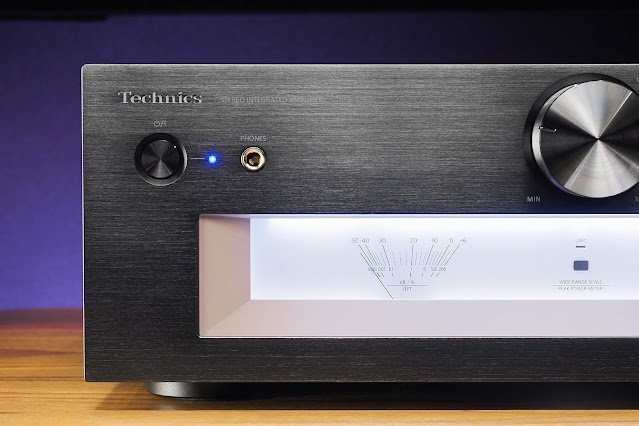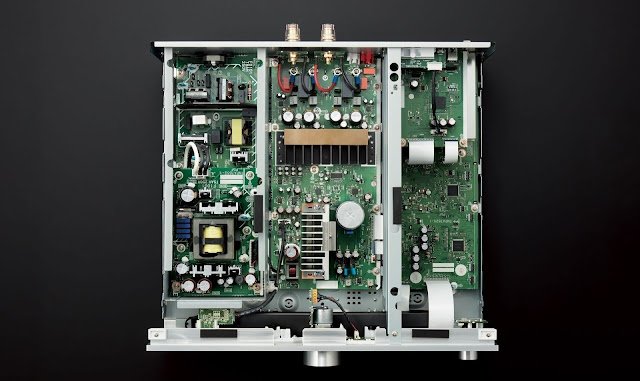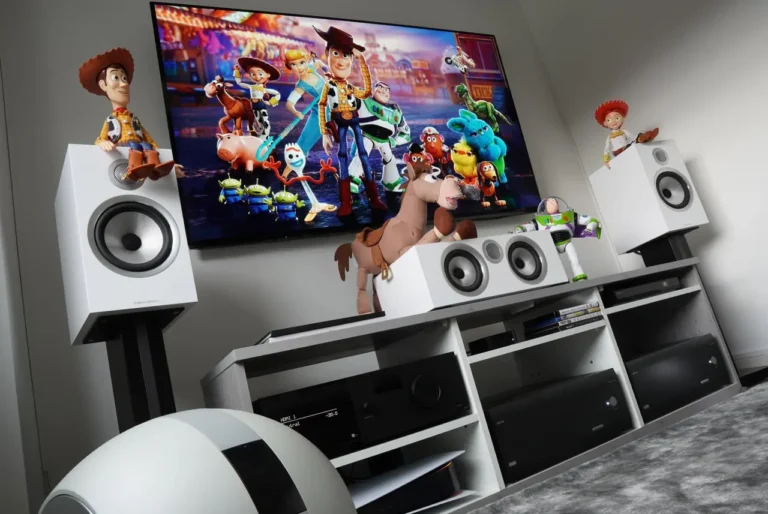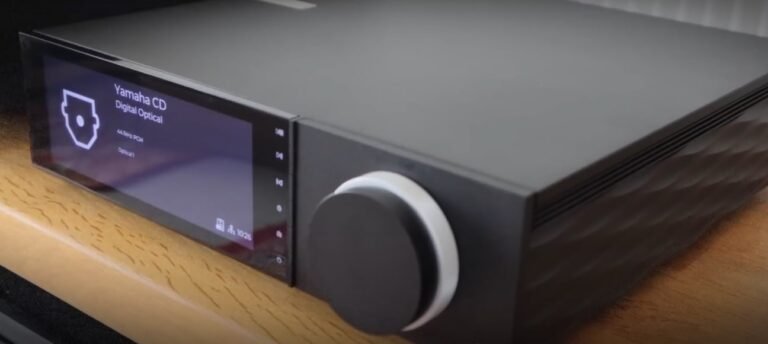Unrivaled Performance: Technics SU-G700M2 Amplifier Review
Technics SU-G700M2: The theme of classic Hi-Fi is increasingly exploited in the creation of modern stereo components. It should be noted that several brands do this rightfully because it is their amplifiers “with arrows” of the 70s that are the reference for designers of the 21st century. One such brand is Technics.
The SL-A1 powerhouse with a pointer indicator on the entire facade was the dream of many audiophiles 30 years ago, and modern Technics amplifiers have every chance of becoming the ultimate dream for many in our time. This is because the classic design hides the latest technology, several generations ahead of most competitors. And, importantly, Japanese engineers reinforce their technological advantage with their inherent perfectionism and attention to the smallest details.
A Short About Technics SU-G700M2
Technics does not need a special introduction among American connoisseurs of high-quality sound. This is the oldest Japanese brand, which was especially popular in our country. Branded Hi-Fi components, stereos, headphones, and portable players were very popular at the turn of the century – from the time foreign electronics hit the store shelves, until the moment when the Technics brand completely disappeared from these shelves.
And here it is impossible to do without a brief historical background. The Technics brand, along with Panasonic and National, was owned by the Japanese corporation Matsushita Electric Industrial. On a corporate scale, Hi-Fi was not a dominant activity, and as demand in this market segment declined, production of components ceased, and Technics Hi-Fi disappeared with it.

Time has passed. Matsushita Electric Industrial Corporation was restructured to become Panasonic Corporation, and the demand for high-end audio began to rise again. On this wave, the Technics brand was revived in 2014, and now the familiar logo adorns several lines of Hi-Fi components, as well as stylish multi-room acoustics and all-in-one systems.
In parallel with this, a line of vinyl players began to develop more actively, which did not lose their relevance as equipment for DJs, and now have regained their former popularity among audiophiles.
We need all this information to understand one simple fact: the current Technics is the same company and the same engineering tradition that produced the very components of the golden era of Hi-Fi.
You May Like: 8 Expert Tips to Enhance Your Home Audio System
Tradition and modernity
It is difficult to find a Hi-Fi manufacturer who would not talk about how carefully he treats all stages of component development. However, it is enough to listen to what happened as a result, or just look under the cover of the device to understand how these words correspond to reality.

In the case of Technics, the seriousness of the developer’s intentions is obvious even at the stage of distance acquaintance with technologies. With the Technics SU-G700M2 Integrated Amplifier, Japanese engineers re-traced the path of Peter Lingdorf in their way, creating an all-digital amplifier.
In addition, quite traditional ways of improving sound, which have been practiced in High-End equipment since the last century, were additionally applied: vibration control, careful selection of materials and components, and so on. This combination of cutting-edge technology and classic precision sound tuning looks very interesting.
The first thing we see if we look under the lid of the apparatus are thick steel walls and two partitions that divide the body into sections isolated from each other. In addition to shielding that protects the power supply, power amplifier, and preamplifier from crosstalk, all three sections are vibration-isolated from each other and the external environment.

As for the contents of the amplifier compartments – there is nothing like traditional models. The power supply section does not have a toroidal transformer with large capacitor banks, the power amplifier section does not have a large heat sink with powerful transistors, and the preamplifier board looks more like a DAC module or a network player. Let’s start with the last one.
Digital inputs and the only way
The Technics SU-G700M2 preamplifier is fully digital and based on proprietary JENO Engine technology. This is a complex digital circuit with a vanishingly low level of intrinsic jitter and an input signal reclocking system.
It amplifies digital signals and converts them directly into pulse-width modulation, which is fed to the input of a class D power amplifier. The preamplifier circuit operates under the control of a precision battery-powered clock generator.
As a result, from the available set of inputs, the SPDIF interfaces and USB feed the signal directly to the preamplifier circuit, and the signals from the analog inputs after switching go through an analog-to-digital conversion. The highest quality ADC chip available is from the audiophile-favorite BurrBrown brand.
Nevertheless, there was a place for an analog circuit in the preamplifier – this is a phono stage that works with both types of cartridges: both MM and MC. Its input stage operates in differential mode, and the output stage is built on low-noise FET transistors. A feature of the phono stage is an adjustable preamp level.

The user can select one of four fixed volume levels to match the phono stage to the characteristics of the cartridge being used. Another useful feature is the ability to invert the phase of the input signal. This is necessary for listening to some old vinyl records.
On the rear panel, it is easy to notice a pair of analog outputs. The line output is connected only to analog sources and produces the same signal that goes to the ADC. Variable analog output works differently. Given that the volume control occurs in the digital domain, the signal to it comes through the DAC. It is also curious that the amplifier has no digital outputs.
Based on the foregoing, it is most reasonable to consider the Technics SU-G700M2 amplifier as a thing in itself, which does not make sense to use partially – only as an external DAC or preamplifier. The ideal signal path is from digital inputs to speaker terminals, and the rest can be useful for some ancillary processes like recording sound from vinyl through the built-in phono stage or connecting a powered subwoofer to a regulated output.
Auto calibration
The main feature of the power amplifier unit is the proprietary LAPC (Load Adaptive Phase Calibration) technology. It radically changes the very principle of interaction between acoustics and amplifiers.

In normal situations, the amplifier is designed to work with some hypothetical load, the operating impedance of which is in the range from 4 to 8 ohms, and the phase is conditionally linear. At the same time, the actual impedance of acoustics, as well as its phase, are non-linear – and it is this non-linearity, combined with the ability of the amplifier to compensate for it, that determines the nature of the sound of the bundle.
Technics engineers have changed the rules of the game. LAPC technology measures the characteristics of the connected speakers and adjusts the frequency and phase characteristics of the output signal accordingly.
Thus, we get a pair of acoustics-amplifier, in which the impedance and phase of the acoustics are of no fundamental importance and minimally affect the result. In other words, the Technics SU-G700M2 is an amplifier that can handle any speaker. In any case, this directly follows from the description of the principle of operation of the technology.
Energy without noise
The third integral part of the amplifier is the power supply. This is no less important part of the design than all the others. After all, the amplifier circuit only modulates with a musical signal the energy that comes through the power supply from the network.

Historically, all attempts by engineers to improve the power supply of amplifiers and other components have been reduced to two directions: some improve linear power supplies, while others improve switching power supplies. Both of them have great potential, but if you think in absolute terms, impulse ones, as more modern ones, have more prospects. This is probably why this path was chosen by Japanese developers.
The power supply unit installed in the Technics SU-G700M2 has a record low noise level. Significantly smaller than good audiophile-switching power supplies, not to mention the rest.
This was achieved by multiplying its operating frequency, which reaches 400 kHz (even though 100 kHz is already considered a high rate!). Selected electronic components helped to ensure the stability of the circuit. To suppress residual noise at the output, high-quality voltage stabilizers are used.
As a result, the power amplifier unit receives the purest power without any impurities in the form of noise and interference. In addition, the switching principle of operation, combined with increased frequency and the original capacitor bank borrowed from the flagship SU-R1000 model, provides an exceptionally fast response of the power supply to the needs of the amplifier board.
This means that the dynamic performance of the Technics SU-G700M2 should be better than any other devices equipped with both linear and switching power supplies.
And for headphones
It is especially pleasing to note the fact that fans of personal audio have not been forgotten either. The Technics SU-G700M2 has a headphone output and another technological marvel hides behind the standard 6.3mm jack.

The headphone amplifier circuit takes as input the same PWM signal that goes to the power amplifier, but then it is immediately converted to analog form. The analog part of the circuit works in class AA – this is also an original development of the company. The first stage in the analog part is a voltage amplifier and operates in pure class A, and the second stage provides the required output current to the connected headphones.
In practice, the headphone amplifier has a surprisingly clear and transparent sound and also has good headroom for driving high-impedance models. If it were not for the lack of a balanced output, its capabilities and quality class could be called exhaustive.
Second generation
The Technics SU-G700M2 amplifier belongs to the second generation, as indicated by the M2 index. Moreover, if you put two amplifiers side by side – SU-G700 and SU-G700M2 – the only difference will be the inscription with the name of the model. The list of internal changes, according to official information, is rather laconic: the M2 model has expanded the functionality of the phono stage and also uses elements of the power supply from the flagship amplifier.
At first glance, this is not enough to get any significant differences – especially if the source is digital. But with a direct comparison, it is simply impossible not to notice a significant difference like the sound.

The first model, which we have already tested, impressed me in the first place with its detail, dynamism, and sound accuracy. The scene was drawn very convincingly and was not tied to acoustics. At the same time, exceptional sound composure, full control of acoustics, and focus throughout the entire range were accompanied by some restraint in emotions. Reproducing the sound picture quite authentically, the Technics SU-G700 amplifier system gravitated toward the analytical presentation of the material.
Other things being equal, the Technics SU-G700M2 gave a completely different result. Having retained most of the above properties, including exceptional detail, he made the scene even more voluminous and large-scale, and the sound was filled with a large number of microdetails and shades, giving it a pronounced emotional coloring.
And therefore, the perception of music as a whole has radically changed. If the first version of the amplifier gave a practical studio character of presentation with an emphasis on details, the second surprises primarily with a sense of realism and expressiveness, thanks to which from the first notes you fall into listening, forgetting about everything in the world.

This comparison reminded me, oddly enough, of experiments with digital transports, when, moving from mid-budget models to High End, you don’t get any radical increase in formal characteristics, but the sound surprisingly comes to life, begins to breathe, live, filled with many nuances and shades that make the overall picture hyper-realistic.
What is characteristic is that in digital, this effect is achieved solely due to the fight against various kinds of noise, incl. incoming food. And we see the same approach in the case of the Technics SU-G700M2. Further improving the power, the developers revived the sound.
Correct load
From the theoretical part, we concluded that the amplifier should be largely “omnivorous”, since it can compensate for the imperfection of the acoustics connected to it. However, in practice, Technics SU-G700M2 gave reason to remember that in addition to electrical characteristics, acoustics have many other properties.
For example, with the most ideal control of the speaker from the side of the amplifier, the presence of a soft cone that lubricates the bass will not radically improve the sound. A miracle will not happen even if the acoustics as a whole do not have high resolution.

Moreover, during the experiments, it turned out that high-end acoustic models made according to classical canons are also not ideal partners for the Technics SU-G700M2 amplifier: in such a bundle, the nature of the speakers themselves is too pronounced, and not their strongest sides, while when working with classic transistor or tube amplifiers, they also sound very interesting, demonstrating only their merits.
The best partners for Technics SU-G700M2 turned out to be acoustic models that are built according to modern canons and focused on the most detailed, accurate, and focused sound. In such bundles, the strengths of both the amplifier and the acoustics do not even add up, but multiply each other, giving a fantastic result.
One of these options is the operation of the amplifier together with the branded Technics SB-C600 shelf speakers. It is hard to imagine that such compact speakers are capable of sounding in a large hall, but de facto, even in a large showroom, the sound turned out to be exceptionally large-scale, voluminous, with a massive bass foundation – as if a pair of medium floor standers were playing.
The coaxial radiators that the bookshelf speakers are equipped with are phase-linear and are capable of creating a three-dimensional scene, and in combination with the Technics SU-G700M2, they fill the whole room with sound, not even giving a chance to localize the sound source by ear. The only thing that I missed a little in this bundle was clarity and detail in the bass range. Still, a small coax in a bass-reflex design is not the tool with which to achieve perfect bass.
The ELAC Concentro S 507 acoustics became an ideal pair for the Technics SU-G700M2 amplifier. We will write a separate article about these speakers, but for now, to understand the scale, I will list their main properties.
ELAC Concentro S 507 is a representative of the flagship line. The model has four bands with a ribbon tweeter, a coaxial midrange/treble section, and four bass drivers. With a low impedance of 4 ohms, it does not have the highest sensitivity (88 dB) and has a rated power of 240 W (with a minimum allowable of 60 W). And at the end of the portrait – the speakers cost about five times more than the amplifier.
The result of the joint work of Technics SU-G700M2 and ELAC Concentro S 507 can turn the most inveterate audio skeptic into an adherent of modern High End. The system gives the listener a real, live, holographic soundstage. The musicians just appear in the room – and there is a feeling that you can touch them.
And the most amazing thing is that realism and a sense of volume are perceived even by listeners who are in the next room. This combination has no equal in its ability to convey the atmosphere and acoustic space, which makes classical, jazz and live recordings sound great.

All this is combined with an even tonal balance and an exceptional degree of detail, allowing you to see all the subtleties of the mix, as far as the original quality of the content allows. The system keeps the listener’s attention on the emotional and artistic components of the music.
Thanks to this, even compressed recordings can be listened to without any discomfort – and the situation when the music library has to be limited only to the best Hi-Res editions and individual vinyl releases is excluded. The most banal CD and the record released in the 80s by Melodiya can give no less emotion than a modern DSD file.
Results
In my opinion, the Technics SU-G700M2 amplifier is the most convincing and demonstrative example of the triumph of modern technology. How it is possible to bring transistor or tube technology to perfection – we have already observed many times over decades, but such a chic realization of High-End sound in digital is extremely rare.
The only thing left of the classic approach in this amplifier is the fight against vibrations and interference, as well as the careful selection of components in terms of impact on sound. Everything related to circuitry is a continuous innovation, which is shunned by many conservative developers and end users.
Since we are dealing with circuitry that is radically different from the traditional one, approaches to the further improvement of the system should also be completely reconsidered. It is quite obvious that in a system with a Technics SU-G700M2, an external DAC will not help improve the sound in any way, and the influence of cables may manifest itself somewhat differently than with classic components.
At the same time, a change in digital transport can have a noticeable positive effect, and, considering how the developers improved the sound of the amplifier, it makes sense to continue research in this direction. Vibration decoupling mounts, network conditioners, and filters may well have a significant impact.
The only question that remained open for me is a rather modest choice of digital interfaces that the amplifier has. The set of inputs and outputs looks like we are dealing with an analog circuit and not with a fully digital path. Digital outputs, an AES|EBU interface, and clock I/O would look appropriate on the back of a Technics SU-G700M2.
Pros and Cons Technics SU-G700M2 Amplifier:
Pros:
- Premium Build Quality
- Impressive Sound Performance
- High-Resolution Audio Support
- Advanced Power Supply
- Multiple Inputs and Outputs
- Dedicated Phono Stage
- Efficient Cooling System
Cons:
- Price Point
- No Built-In Streaming
- Weight
- Limited User Interface
Technics SU-G700M2 Specifications:
Power: 2x70W into 8 ohms, 2x140W into 4 ohms
Impedance: 4-16 ohms
Frequency range: 5-90,000 Hz digital input, 5-80,000 Hz analog line input
Phono stage: MM/MS
Digital inputs: 2x optical, 2x coaxial, USB-B (asynchronous, USB Audio Class 2.0)
Digital Formats: PCM up to 32bit/384kHz, DSD up to 256 (native or DoP)
Analog inputs: 2x line, phono stage
Analog outputs: linear, adjustable
Dimensions: 430x148x428 mm
Weight: 12.6 kg
FAQs Technics SU-G700M2:
- What is the power output of the Technics SU-G700M2?
The SU-G700M2 delivers 70 watts per channel into 8 ohms and 140 watts per channel into 4 ohms, providing enough power for most speaker setups. - Does the Technics SU-G700M2 support vinyl playback?
Yes, it has a built-in phono stage, allowing you to connect your turntable directly for high-quality vinyl playback. - What kind of inputs does the SU-G700M2 have?
The amplifier comes with multiple inputs, including RCA, phono, optical, coaxial, and USB, making it compatible with a wide range of audio sources. - Does the Technics SU-G700M2 have a remote control?
Yes, it comes with a remote control for convenient operation from a distance. - Does it support high-resolution audio?
Yes, the SU-G700M2 supports high-resolution audio formats such as FLAC, WAV, and DSD, ensuring excellent audio quality. - Can I use the SU-G700M2 with my home theater setup?
While it’s designed primarily for Hi-Fi stereo setups, it can be integrated into a home theater system, but it lacks surround sound processing typically found in AV receivers. - Does the Technics SU-G700M2 have a headphone output?
Yes, it features a dedicated headphone output, providing high-quality sound for private listening. - How does the LAPC feature work?
LAPC (Load Adaptive Phase Calibration) optimizes the amplifier’s performance by adjusting the output to match the impedance of your speakers, delivering a balanced and accurate sound. - What’s the difference between the SU-G700 and SU-G700M2?
The SU-G700M2 is an updated version of the SU-G700, offering improved sound performance, better components, and enhanced features like a more refined LAPC and JENO Engine. - How much does the Technics SU-G700M2 cost?
Pricing varies by region and retailer, but the SU-G700M2 typically falls in the premium range of high-end amplifiers. Be sure to check with authorized dealers for the most accurate pricing.







